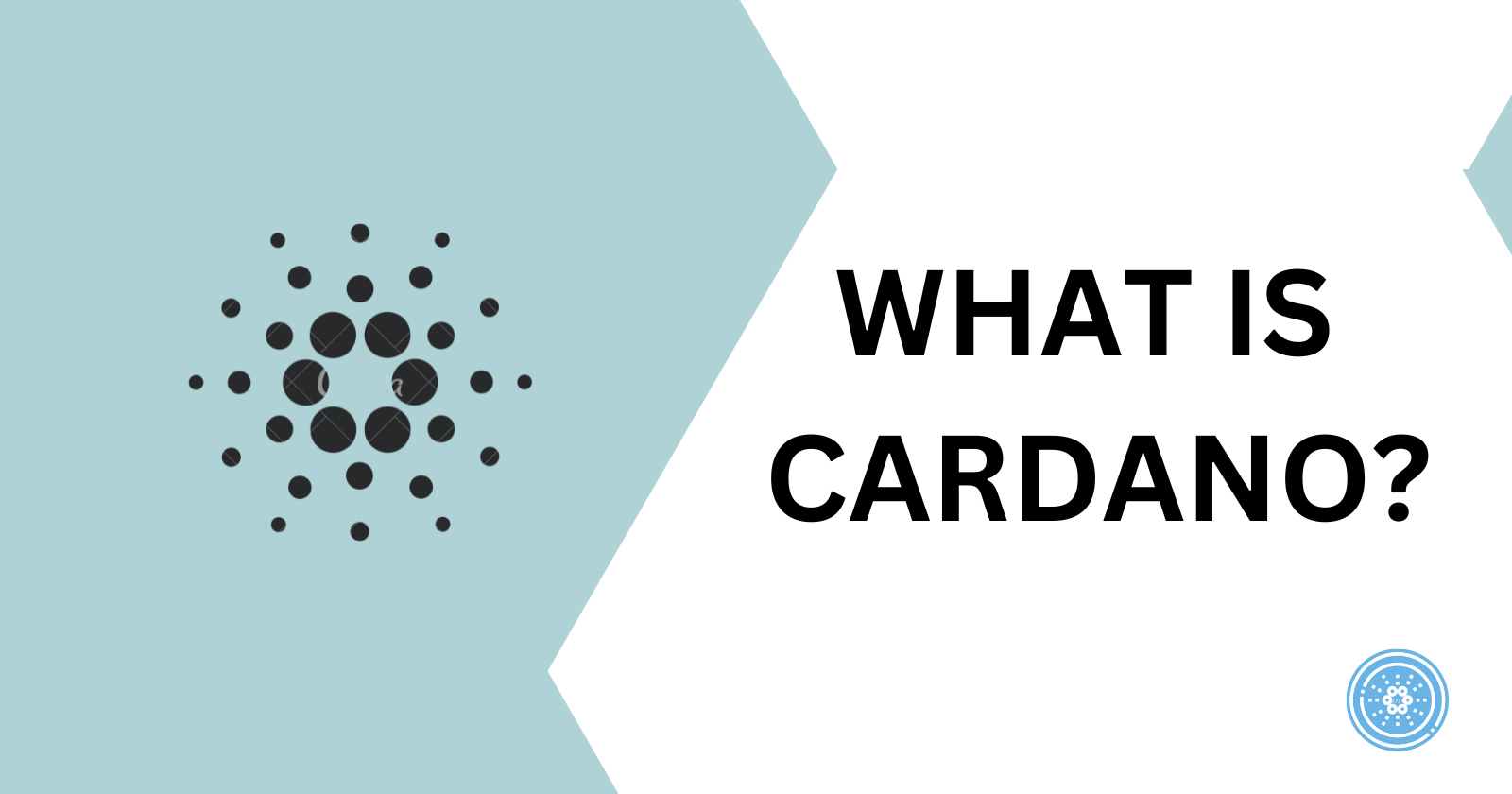What is Cardano?
 Kingsley Ubah
Kingsley Ubah
The first-generation blockchain, Bitcoin, turned the idea of digital, permissionless money into reality. It also ushered in the second-generation blockchain, called Ethereum, which introduced scalability and programmability with smart contracts.
These blockchains, however, face three fundamental issues: interoperability, scalability, and sustainability. Put simply, they don’t have the flexibility and robustness to handle an ever-increasing number of transactions in a fast, efficient, and secure manner.
Those three foundational issues were the basis upon which Cardano was created. So what is Cardano? And how exactly did this game-changing technology come about?
The Issues With Bitcoin and Ethereum
Bitcoin’s launch proved a theory that digital money, devoid of centralized control, could exist. It uses the proof-of-work consensus model to validate payments in the network. The POW model requires vast amounts of energy; for Bitcoin, we’re talking of energy equivalent to that of Ecuador.
Another issue with Bitcoin is its poor scalability. By design, Bitcoin’s on-chain transaction processing capacity is limited by the average block creation time of 10 minutes and the original block size limit of 1 megabyte. Consequently, its capacity currently hovers between 3.3 and 7 transactions per second.
Ethereum brought programmability to the blockchain in the form of smart contracts. It also improved upon the scalability issue of Bitcoin, making its network more robust.
The problem is that Ethereum wasn’t designed to handle the huge volume of transactions that today’s DApps require. This led to the launch of Ethereum 2.0.
Let’s also talk about the problem of interoperability that the first and second-generation blockchains suffer from:
Despite having lots of cryptocurrencies, the crypto world has no platform where these coins can work together
Governments and banks don’t want to deal with cryptocurrencies because of their noncompliance with regular banking laws. Crypto transactions do not have metadata about where the money comes from, who it's going to, and for what purpose. This, therefore, makes it hard for banks to trust them.
All these issues informed the creation of Cardano.
History of Cardano
In 2015, a group of scientists, led by Charles Hoskinson, commenced their journey toward a new age of sustainable blockchain technology. The goal was to create the platform of choice for the future crypto economy.
Such an audacious goal meant the platform needed high-end data security for billions of users, scalability to accommodate global systems, and the power to support foundational change.
Charles founded IOHK, the technology and engineering company tasked with designing, building, and maintaining the Cardano platform. The Cardano Foundation supervises and oversees the development of Cardano and its ecosystem. Emurgos founded the Cardano blockchain and works to boost the adoption of its Web 3 ecosystem.
They took the good parts of the earliest blockchains and created a new standard in technology: a more powerful blockchain with the capacity to support global systems and real-life business use cases.
Oroborus
The heart of Cardano is Oroborus, its leading-edge proof-of-stake consensus protocol. Oroborus was developed using the functional programming language Haskell.
The proof-of-stake model solves the performance and energy-use issues inherent to the proof-of-work model. Oroborus is therefore a more sustainable protocol befitting of Cardano’s goal to become the platform for the world’s financial system and governance.
Efficiency of Cardano
Cardano is a third-generation blockchain and the first founded on peer-reviewed research. It’s nearly a million times more efficient than Bitcoin at the moment. It consumes little power, such that you could run a global financial system with the power of a large home.
The entirety of its code is open-sourced and was built from scratch using formal methods such as NASA and SpaceX. No intellectual property is monetized, and no patents are filed.
Cardano’s Interoperability
Cardano is designed to solve the issues of scalability and sustainability. Beyond that, it intends to bring interoperability to the cryptocurrency world. But how does it intend to solve the interoperability problem?
Cardano’s founder envisions it as the “internet of blockchains”, or in other words, a blockchain that is in tune with the happenings within the other blockchains. On the Cardano platform, individual blockchains can communicate with one another, and users have the option to attach metadata to their transactions.
It’s a place where Bitcoin, Ether, and other coins can freely pass into other blockchains (like EOSIO) without needing to go through central exchanges. In other words, Cardano wants to enable “Cross-chain transfers” and make the process seamless.
Cardano’s currency: ADA
Cardano’s ecosystem is powered by its native digital currency, ADA, named after revolutionary programmer Ada Lovelace. ADA has a finite supply of 45 billion, of which 35.32 billion coins are circulating. It has a market cap of about 16 billion US dollars.
Every transaction is permanently, securely, and transparently recorded on the blockchain, and every ADA holder also holds a stake in the Cardano network. Users, no matter their location, can use it as secure digital money without requiring a third party.
Decentralization and Performance
Another great thing about Cardano is its level of decentralization. Stakeholders can delegate their stake on their terms and from their wallets.
The release of the Goguen era brought about the ability to build decentralized apps on the platform. In addition, unlike Bitcoin, as the price of Cardano goes up, the level of decentralization also ascends.
Cardano aims to provide more advanced features than previous protocols. It already provides improved optimization, scalability, and interoperability among blockchains, making it poised to support growth and adoption for high transaction volumes.
The final stage of Cardano’s development (i.e., the Voltaire era) will see it grow into a self-sustaining system with a voting and treasury system. Every user will have the right to use their stake and vote to influence the future development of the network.
Conclusion
Cardano has moved us one step closer to a society where digital payments are fast, transparent, secure, and accessible to all. In a world where freedom and privacy continue to be under attack, Cardano offers us a way to trade freely and seamlessly.
In the last year alone, Cardano’s ecosystem welcomed a lot of major innovations, protocol launches, and major events. All these developments give us reasons to be optimistic about the future of Cardano and the crypto economy as a whole.
Subscribe to my newsletter
Read articles from Kingsley Ubah directly inside your inbox. Subscribe to the newsletter, and don't miss out.
Written by

Kingsley Ubah
Kingsley Ubah
Technical writer | Backend web developer | Experienced in developing and deploying web and mobile applications. Writes for @Logrocket, @tutsplus and more